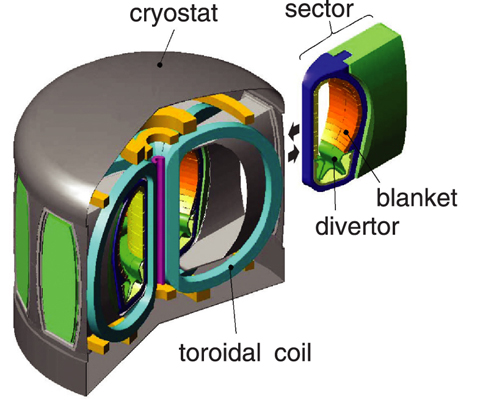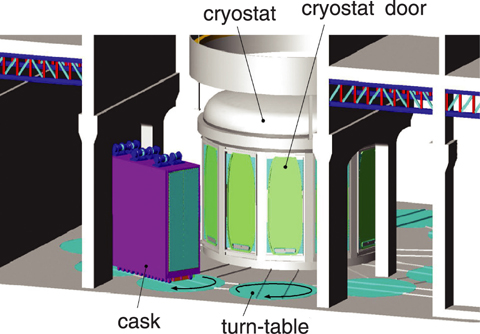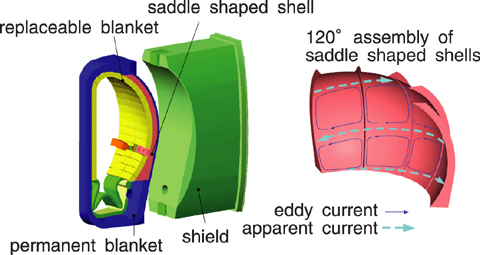
Fig.3-22 Concept of torus configuration and maintenance for fusion DEMO reactor

Fig.3-23 Sector transport for maintenance

Fig.3-24 Structure of sector and saddle shaped shell
A conceptual study of compact fusion DEMO reactor design resulted in a torus configuration and maintenance scheme which shortens the time required for periodic replacement of core components such as blanket and divertor. Such shortening of maintenance time can lead to an improvement of plant operation rate, and thus to a reduction of the cost of electricity.
To quicken maintenance, we adopted a "sector maintenance scheme" in which the core components are divided into twelve toroidal sectors and each sector is en bloc removed and transported to a neighboring hot cell for maintenance and replacement of blanket modules (Fig.3-22). Each sector loads about sixty replaceable blanket modules that must be replaced every two or three years. In the replacement, six steel tubes connected to each blanket module (four for cooling and two for tritium fuel recovery) must be cut, re-welded and tested by remote control. When these replacement procedures are carried out in situ in the cryostat, the replacement time is expected to exceed half a year, unacceptable from the point of view of operation rate. With sector maintenance, the required time will be reduced to about three months because, by replacing used sectors with spare sectors, time-consuming procedures (pipe cutting re-welding and testing) can be carried out in the hot cell during tokamak operation. On the other hand, this maintenance scheme raises concern about transport of heavy sectors. This issue is resolved with the use of a wheel and bearing system and turn-tables (Fig.3-23). A saddle shaped conducting shell placed in between replaceable and permanent blankets is one of the key components of DEMO. The assembly of the shells also plays the role of passively stabilizing the plasma by inducing eddy currents, as shown in Fig.3-24.